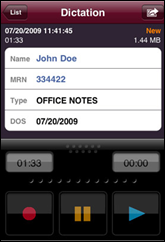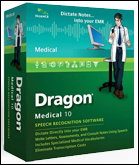Justin Barnes is VP of marketing, corporate, and government affairs of Greenway Medical Technologies. Mark Segal, PhD is director of government and industry affairs for GE Healthcare IT. They are chairman and vice chairman, respectively, of the HIMSS Electronic Health Record Association.
These questions were jointly answered by Justin Barnes and Mark Segal via e-mail.
Why should a member organization like HIMSS be in the business of running a trade association like the HIMSS EHR Association? Doesn’t representing both providers and vendors lead to inherent conflicts?
This is a great question. A small group of EHR software provider executives decided to form the Association in 2004 because of an identified need for a focused, EHR trade association that could offer a voice for its customer base as well as its EHR expertise. After considering multiple operating and incorporation options, we selected HIMSS to provide administrative and financial support as well as their legal and compliance expertise in managing trade association operations. Most important, we established and maintain the EHR Association as a fully independent entity on legislative initiatives, public policy and other industry positions.
So, there is no conflict at all. Both the EHR Association and HIMSS have complete independence in working with industry leadership, advocacy on a variety of issues and other activities, and we develop our own expert policies and submissions to legislative and regulatory bodies.
More generally, HIMSS, like other multi-stakeholder organizations, represents a variety of HIT stakeholders and it has processes in place to allow all these voices to be heard and represented in their overall positions. We think that this multi-stakeholder perspective complements the more focused efforts of the EHR Association extremely well.
Small vendors claim that CCHIT over-represents big vendors, giving them undue influence over certification requirements that reflect the products they have already built. Is that a fair accusation? Does the HIMSS EHR Association have that same challenge, especially since only HIMSS Corporate Members were eligible to join and membership is currently closed?
It is not clear how CCHIT could over-represent large vendors since it does not actually represent any vendors. Vendors clearly are critical stakeholders in the certification process and vendor employees do, appropriately, have a role in CCHIT bodies (but not as formal vendor representatives) along with other stakeholders. In seeking to have the vendor perspective represented, CCHIT has drawn from large and small vendors in its workgroups and to serve on the Commission. You need only look at the list of certified companies to see that there are many, many smaller companies with CCHIT certification, companies that have a range of technology and business models, and time in the business, including open source EHR suppliers.
CCHIT participants from vendors have had only a minority say in development of certification criteria. In any event, CCHIT, up through what was planned as its “2009” criteria, has used a transparent process of multiple review cycles to develop and refine criteria that are often very challenging to vendors of all sizes and types. Any and every company is more than welcome to comment on any CCHIT criteria. We all encourage this whole-heartedly. We encourage our customers and all healthcare providers, as well as other HIT professionals to also review and provide their expertise. Multi-stakeholder participation is a critical aspect of an effective HIT or EHR certification process.
An important objective from the inception of the EHR Association has been to have equal representation from companies of all sizes and market focus. Our relationship with HIMSS has allowed us to keep our dues low, with a sliding dues scale based on company size. This approach has allowed us to have members from across the spectrum. Every member gets the same opportunity to participate in workgroups and to run for our Executive Committee. Each member company has one vote on all matters of process and policy. We hold monthly all-member meetings to encourage active participation by all member companies. In addition, we maintain a careful balance between our enterprise vendors and those often smaller companies that focus solely on the ambulatory market. Finally, membership has been temporarily closed as we update some of our operating policies. Nonetheless, we just admitted four new members who had applied before this closure, which we expect to end shortly.
What is the position of the association on Meaningful Use?
From the start of the ARRA legislative process, we have wholeheartedly supported the concept that ARRA incentive payments should require meaningful use of an EHR and not just its purchase or implementation. The Association developed a set of recommendations on meaningful use for ambulatory and inpatient products this past spring that we presented in testimony before the National Committee on Vital and Health Statistics (NCVHS) and in comments to ONC’s HIT Policy Committee. These documents can all be found on our web site at http://www.himssehra.org/ASP/statements.asp.
To recap, consistent with the approach to this concept in ARRA, the key objective of meaningful use should be to ensure that the eligible professional (care provider) or hospital is actually using the features of a comprehensive certified EHR, especially for priority ARRA functions, to improve the quality and efficiency of patient care. To maximize adoption, which really has to come before use, there should be as few criteria as possible consistent with the ARRA framework and policy goals. Practicality and ease of reporting should be primary considerations.
The primary initial goal should be to incentivize as much adoption and use as possible of comprehensive EHRs, consistent with the ambitious adoption goals of Congress and the Administration. To do this, we have to balance the need for accelerated adoption of interoperable, comprehensive EHRs with the need for care providers and hospitals to implement them in a careful and non-disruptive manner.
We have called for HHS to set meaningful user criteria for 2011 and 2012 at achievable levels, with a roadmap for steady uplift over time in expected breadth and depth of use. The general framework adopted by the HIT Policy Committee of two-year increasing meaningful use cycles is consistent with this approach.
We did submit detailed comments on the Policy Committee’s draft proposal. We liked much of the framework but had several specific comments consistent with our overall approach. We stated that 2011 objectives should be based on software and standards that are currently deployed and implemented, especially on the inpatient side, given the short timelines for implementation. This approach has also been taken by federal HIT officials in various venues.
We also commented strongly that meaningful use criteria should support the movement toward standards-based interoperability. Interoperability from the beginning should be measured using HITSP-harmonized standards. Agreeing with many other stakeholders, we stated that the fact that a provider organization is under investigation for HIPAA violations should not be a bar to receipt of incentive funds and were pleased when the Policy Committee responded by changing its initial recommendations.
Our members seem to be taking the position with their customers, consistent with messages from the Policy Committee and ONC, that the meaningful use criteria adopted by the Policy Committee in June should be considered clear guidance on the likely components of meaningful use in 2011-2012, recognizing that there could be changes when CMS releases final proposed criteria in December and then the final criteria in a spring Final Rule. We and our customers are learning to live with this uncertainty, but we have also been consistent in making the point that the industry needs clarity on meaningful use and certification if we are to achieve substantial meaningful use in 2011. We have carried this message to senior ONC and CMS leaders, and they seem to fully appreciate the need for such clarity as quickly as possible while also complying with the requirements of federal regulatory processes.
One of the things that we want to emphasize is the importance of innovation to our members and their EHR products. Across our membership, we have seen considerable innovation in such areas as interoperability, user interfaces, quality reporting and web applications. At the same time, because our member companies serve the vast majority of installed, operational EHR users, we’re constantly challenged to balance such innovation with the support required by customers who may not be ready to move to our newer platforms and releases. Both certification and compliance with meaningful use requirements provide incentives, drivers really, to move EHR developers and users forward on the latest technologies and tools. At the same time, we are pleased that evolving approaches to meaningful use and certification will provide increased space for product innovation by focusing on higher level features and functions.
These questions were answered by Justin Barnes via a telephone interview.
HITECH was supposed to be a quick stimulus package. Is it likely that those practices that haven’t got started and are waiting on meaningful use definition are really going to have time to select a product and to get the implementation resources to meet the deadlines?
Most certainly. I feel that even when the interim final rule comes out later this year, there’s still going to be plenty of time and place for practices to look at companies that have been involved in this process since the beginning and have the track records.
Following meaningful use and the new ARRA certification is very important for companies as well as for consumers, or the practices in hospitals across the country.
If you look back, you’ll look at companies that have been involved for the past several years in the CCHIT process, and probably even involved in the legislative process on Capitol Hill. You’re going to see that some natural leaders will emerge, and you’ll see products and solutions that are usually at the forefront will probably still be at the forefront.
That can help guide people even in these initial stages. Then once the interim final rule comes out and they have these processes solidified around meaningful use criteria and product certification — a lot of companies have already centered a lot of the criteria that have to be a part of at least the first year here.
A lot of the criteria being created is probably not new that we haven’t seen before in some form or fashion. I think that if the company’s been engaged for a long time, they’re still going to be in a very good position here when meaningful use and the new certification process get announced.
You’re going to have a good support base beginning here. As the official announcements come out with which products and the exact criteria, practices that haven’t been involved in this process so far still would have time to go out and purchase solutions, as well as implement those.
It takes time, because Medicare intends to start “meaningful use” as early as January 1st, 2011. But they still can max out their incentives even if they start in 2012. So there’s still plenty of time for practices, and plenty of resources are still available in the industry.
Even as we begin a groundswell, we do make the statements that you probably want to start earlier rather than later, just because it does take time. But you can adopt meaningful use and EHR probably within six to twelve months, depending upon your practice, and depending upon the product that you adopt, and so there’s still plenty of time.
The Medicaid incentives are really based on the states and their approved plans. We see a lot of those plans probably rolling out Q2-Q3 of 2010 and the physicians and eligible professionals that qualify for Medicaid can work off those state plans that have been put in place.
So I’m still thinking there’s six years to qualify for Medicaid incentives, and you certainly have the first year there to maximize those incentives. There’s still plenty of time to qualify for those incentives if you haven’t started yet. But again, beginning your research now is very important.
If vendors really do get a windfall of business from the activity out there, where will the revenue go?
That’s probably company specific. But a significant amount of our revenues always get reinvested in research and development and innovation. So I don’t see that changing a whole lot. We obviously employ tens of thousands of people as an industry, and we will obviously continue to employ, and that obviously supports the economy.
But a significant amount of our revenues always get reinvested in research and development and innovation. We only see that increasing because we have an industry right for innovation. A lot of us have innovative solutions today, and only look to make those better. Certainly, this gives us an opportunity to continue those investments and obviously continue to employ Americans, which is a cornerstone of our country.
It seems like the market is somewhat polarized into either the high-end, bigger name systems that cost more than hospitals tend to like because it’s a known organization with good support, or the inexpensive simple systems the doctors seem to gravitate toward when they get to pick on their own. How do you think that will play out?
I certainly understand that perspective. I would say that we are going to be entering a new era of meaningful use. There are certainly companies and products out there that have been focused on meaningful use since the start of that company.
But the meaningful use in electronic health record really is the cornerstone to the success of the practice. Using technology and really reaping the incentives, reaping the savings and the return on investment are still used to streamlining their operations.
Having a system that you can adopt and you can utilize at the point of care is critically important. I think that you’re going to see a potential shift from some of those philosophies to really using innovative solutions that allow facilities to achieve meaningful use.
If it is some of the companies that have been around for a long time, then terrific. But I think there’s plenty of room for companies that you may not have heard about for the last three years, but certainly have innovative solutions that are used very effectively and allow for the customers to be very efficient. You’re going to see a lot of those, I think, do very well — certainly the leaders to do very well — and will probably become household names.
How much attention do you think the industry is paying or needs to pay to the usability issue?
I think the industry is paying good attention to usability. Usability is almost dependent upon the practice and their workflow. When you go into research in EHR, it should have always been very important to ensure that solution is usable at the point of care with patients.
Before they purchase their solution, they should always do their reference checks and really ensure that they’re looking at comparable practice sizes, comparable specialty, and ensure that the product is usable at the point of care.
Just because you buy an EHR doesn’t mean you’re actually using it and it’s adding benefit to your facility. You’ve got to make sure you implement it, and you’re buying the right product for your right size, your specialty, to really reap the benefits from it.
I think the market is beginning to properly focus on it now more so than ever before. A lot of practices have always been focused on it. So I don’t think that it’s something we need to overemphasize. I think that the right focus is being applied to it now, but we don’t want to swing the pendulum too far over into certifying components.
Let the customers really manage that. Let them manage their business. Let them manage what they’re looking for. They’re very educated, and they can do that.
It’s interesting that Dell is now wanting in this marketplace. What do you think the perceived opportunities are for big companies that really haven’t done much in healthcare to suddenly decide that that stimulus money looks pretty good, and that untapped market of physician practices looks like a lot of green field in front of them?
About Dell, I can specifically speak to that. Dell has been committed to the healthcare market for well over a decade plus as long as I can remember. They’ve been a very active player. They’re active partners of my company, and they just continue to support the industry to its needs. So I certainly see if there are companies out there looking to increase their focus, that’s because there’s a perceived need.
I believe there is a need. I’m certainly for big partners to step up and really support our industry. We have a lot of growth, and a lot of work needs to be done to support this growth and its focus from a national perspective.
I think companies like Dell are rightly focused, but I wouldn’t say they’re new. Like I said, Dell has been a strong proponent. They’re probably coming more to the forefront in some of their activities, but they’ve been there for a decade plus from my perspective, and will continue that investment on to ensure that we perform the very best services in the industry and are supported with what we need from a hardware perspective and a services perspective.
Do you think they’ll take away market share from anybody or will they just create new markets?
I don’t see Dell taking away market share from anybody. Well — what perspective are you talking about? Are you talking about from a hardware perspective or an EHR perspective?
EHR. If you’re not eClinical Works or whoever eventually their list of partners are, and Dell’s got more of a footprint, do you think that they’ll create enough new market that other vendors who want in on their list of partners will not see any difference, or are they going to push more business into those handful of vendors that they’ve chosen to work with?
Dell was working with probably more vendors than you may have seen publicized in some recent press announcements. Dell’s behind certainly my company and several other companies. I think that if you standardize on a Dell platform or look to, then you’ll certainly have a strong partner for many years to come. I would say that they support their partners very well and they’re looking to obviously support them with all the services and in hardware solutions that those partners in EHR need.
Is there anything else you wanted to mention?
Hopefully we clarified enough the difference between HIMSS as an organization and the EHR Association as an organization. We really do operate autonomously even though we have the HIMSS name before ours, but we really operate as a separate entity.
I can understand that there’s maybe value added to the organizations that have kind of turned the reins over to the HIMSS, like MS-HUG and some of the others, but I guess I’m still not entirely clear on the relationships that go on behind the scenes, or what the synergies are other than obviously those organizations getting a pipeline into some potential new members. I’m uncomfortable with the concept of a trade association being under an organization that claims it’s not, so that may just be me.
I think it’s just that we wanted to operate an association and it would take a lot of infrastructure to go off. We have to create a whole new infrastructure to support that association and HIMSS already had all that experience.
So it really allowed us to begin our organization a lot sooner than spending the time it took to build an association, hire all the staff, train all the staff to run the association, when we are actually busy industry executives taking care of our industry, work at the same time and all the other work we do in the industry.
Being able to tap right into an organization that already had an infrastructure built that we already were comfortable with and understood, at least from an operations standpoint, that was the reason we did it.
We looked at several organizations to do it. HIMSS just happened to be healthcare focused, but there are other companies that had the experience that HIMSS did running a big industry association that we looked at as well.
We decided to work with HIMSS just because they probably offered the most support right out of the gate to get us up and running as an association with a lot of need. We still have a lot of need. We had a lot of need when we were founding it. Back in 2004 is when we officially founded it.
It’s like starting a company — well, starting a company is probably not the best analogy, because you want to really run independently if you’re a company. It’s just sometimes, when you partner with somebody, they have the framework already built and you can just take that and run with it instead of having to build that framework from scratch where it could have taken us a long time.
We had a framework for strategic action that came out of HHS. It really got our industry kicked off on the legislative side and the regulatory focus side, and CCHIT was just coming together. We just had a lot of things happening in the industry that we didn’t want to take the time.
It was just really the most effective way for us to get started fast, and then we just kind of operated from there. It was more an administrative simplicity to get our association. And we are the only association under HIMSS. It’s not like HIMSS does this on a regular basis. We are a very unique operating component of HIMSS. So it’s not all that common.
I wouldn’t expect you to necessarily grasp it because it’s never been done before under the HIMSS organization. I know it hasn’t been done before and hasn’t been done since.
Do you think there’s a point where it will make logical sense for either or both parties to kick it out of the nest and let it fly?
We reevaluate our needs every single year. Certainly you never know what the future holds, but as long as our requirements are being met, we probably wouldn’t change anything. But certainly if our requirements were not being met as an association, then we would certainly seek to have them met somewhere for sure.












The article about Pediatric Associates in CA has a nugget with a potentially outsized impact: the implication that VFC vaccines…